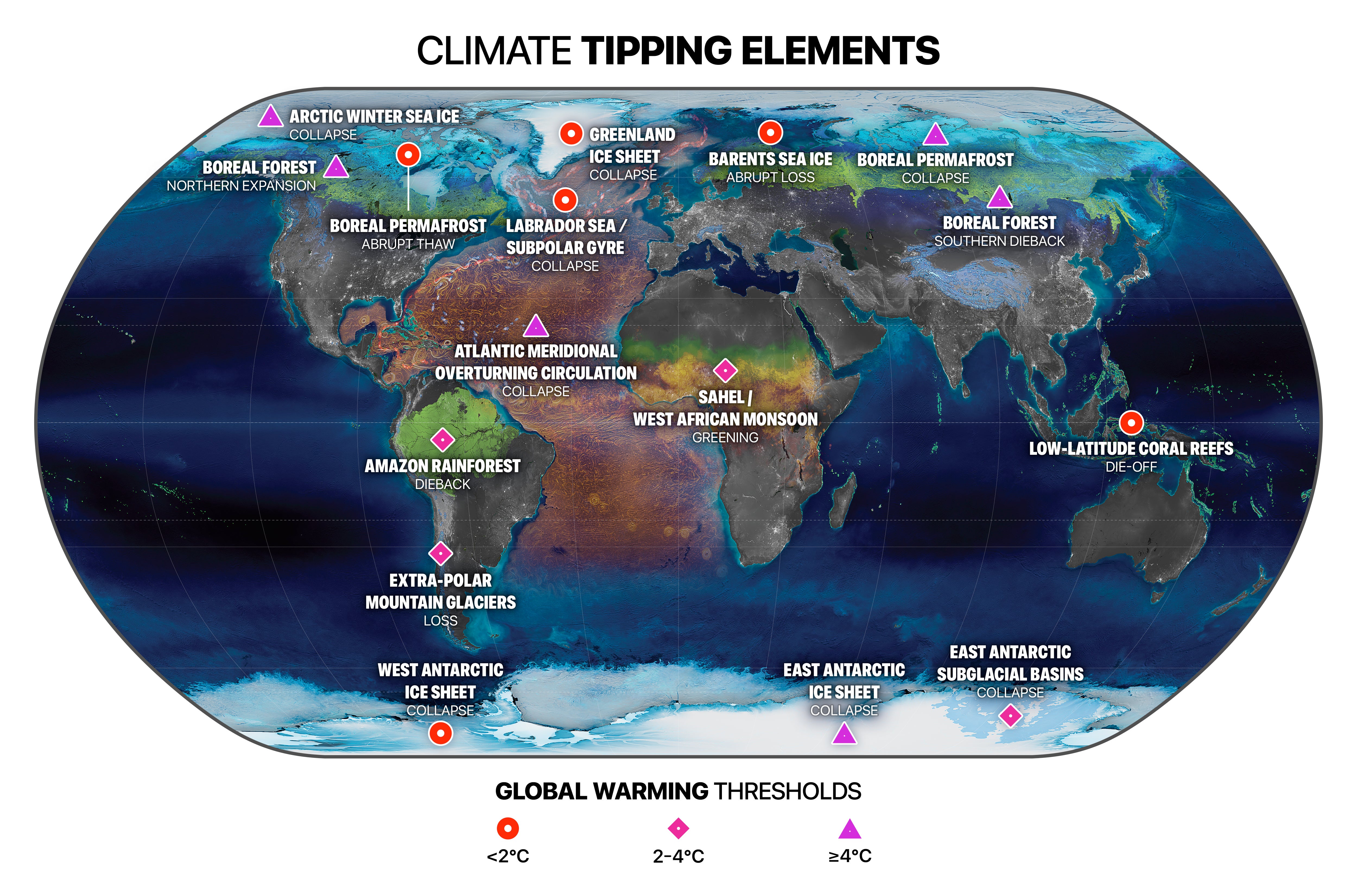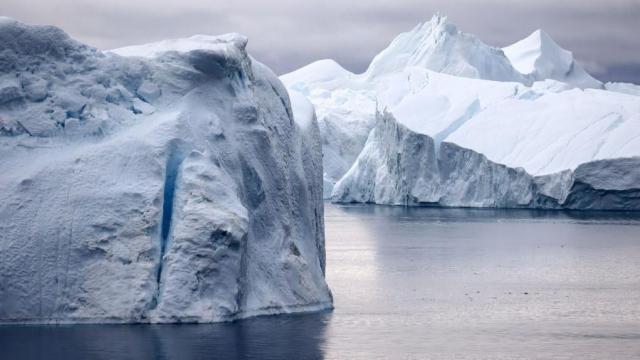Rapid sea level rise, mass die-offs in coral reefs, and quickly melting glaciers are closer to occurring than we think. The planet needs to stay within 1.5 degrees Celsius of warming if we want to avoid triggering some of these events, but a new study published in Science on Thursday finds that we’re already in the danger zone for several irreversible changes to some climate systems: what are known as tipping points.
The tipping points in this study are described as a threshold that is crossed when changes add up and then cause larger changes in the global climate. Researchers identified 16 major tipping points that help regulate Earth’s climate. These include nine global core tipping points that contribute to the plant’s regular functions, like melting permafrost in the Arctic or the collapse of ocean currents.
If the threshold is crossed for these tipping points, there’s little we can do to stop them from happening. By analysing different climate models and reviewing over 200 climate papers published since 2008, researchers found that under our current warming of about 1 degree Celsius above pre-industrial levels, we’re already pretty close to passing several tipping points. If the world manages to stay within the 1.5 to 2 degrees of global warming outlined in the Paris Agreement, six climate tipping points are likely to occur.
“This includes the collapse of the West Antarctic Ice Sheet. Large-scale loss of tropical coral reefs, which of course we’ve begun to see already. And an abrupt thawing of very large regions of the permafrost,” Tim Lenton, study co-author and director of the Global Systems Institute at the University of Exeter, told Earther.

In a scenario where the world doesn’t rapidly work to lower emissions, and we reach about 2.6 degrees Celsius of warming, 10 other tipping points occur. These tipping points include the collapse of the Atlantic Meridional Overturning Circulation, also known as the Atlantic Ocean conveyor belt. This circulation regulates weather patterns in the Northern Hemisphere, and if it collapses, precipitation patterns around the world will change. Agrarian communities around the world that rely on predictable rain patterns to plant crops will struggle under the new changes. The collapse of the “belt” would also cause even more extreme weather to occur in Europe. Another major tipping point is the collapse of the Amazon Rainforest, which was once a carbon sink and home to a large range of endangered species but may now be a carbon emitter.
Lenton explained that the tipping points don’t just all happen all at once if the world reaches certain thresholds like 1.5 or 2.6 degrees Celsius of warming. But the effects will compound over time and contribute to extreme events and displace people all over the world. This includes the several feet of sea level rise that will occur for several centuries after the tipping points are reached.
David Armstrong McKay, lead author of the report, explained that though this study doesn’t look at specific extreme weather events, the increased frequency of disasters is parallel to why it’s so important to study tipping points. “It’s been pretty evident over the last decade or two that climate impacts have just been increasing,” he told Earther. “It’s already not safe, and [extreme weather] only gets worse past 1.5 degrees.”

Johan Rockström, study co-author and co-chair of the Earth Commission, said that the world is likely to continue toward 2 to 3 degrees Celsius of global warming. “We must do everything possible to prevent crossing tipping points. Every tenth of a degree counts,” Rockström said in a press release.
However, researchers still believe that at any warming scenario, decarbonization should remain a priority for avoiding as many tipping points as possible. “We still have the capability of limiting further warming as much as possible,” Armstrong McKay said. “Even if we do go past 1.5 and even if we trigger some tipping points on the way.”
